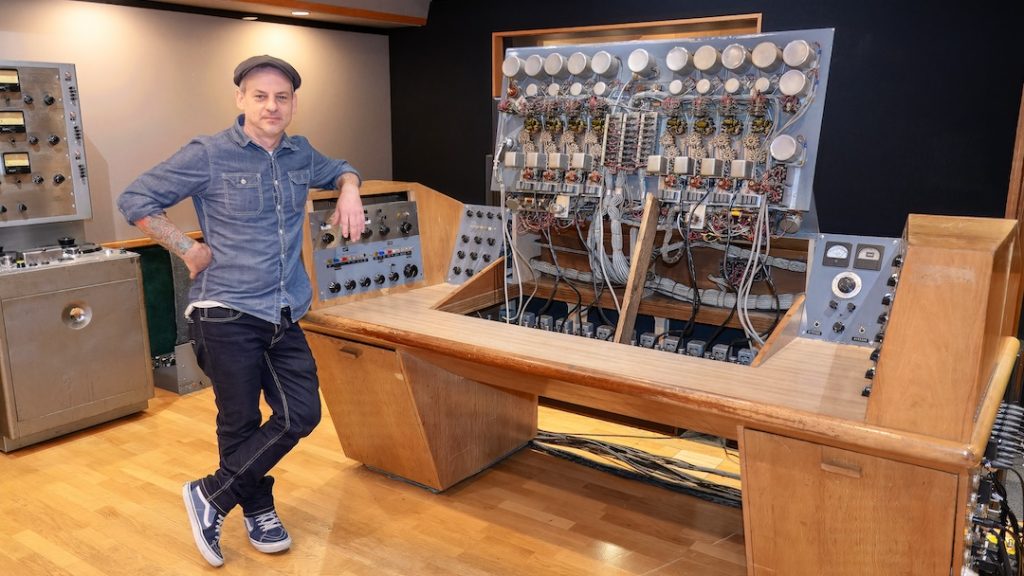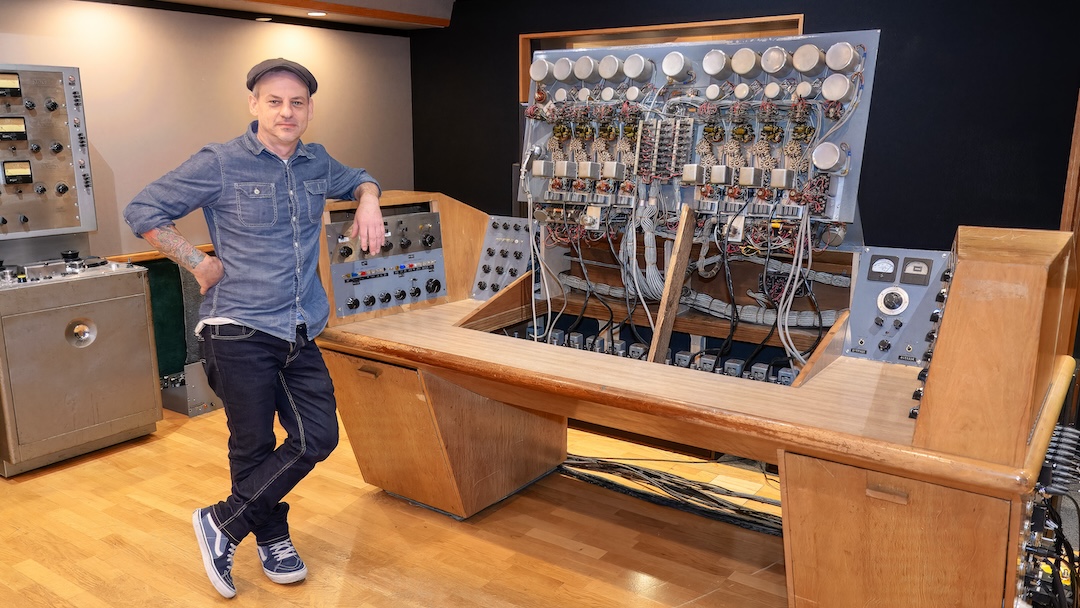
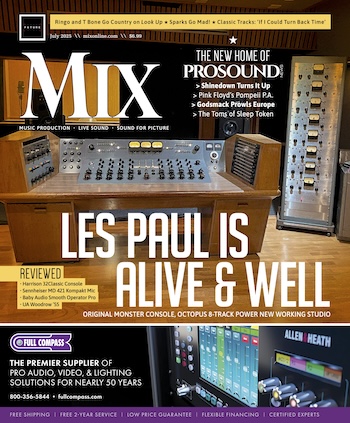
Los Angeles, CA (July 8, 2025)—We are all generally familiar with the concepts and practice of multitrack recording, overdubbing and busing. We take them for granted in the same way that we remotely control all aspects of the recording platform, or add effects while tracking, or mix from the work surface in front of us without a second thought. But back in the 1940s and 1950s, none of these capabilities were available, so Les Paul had to invent them. All of them.
For some, Les Paul is simply a logo on the headstock of a Gibson guitar. Indeed, he designed the first solid-body electric guitar, nicknamed the Log, in 1941. Gibson launched its first commercial version just over a decade later, introducing numerous Les Paul models in the years since.
Meanwhile, throughout the 1950s, Paul and his wife, Mary Ford, released one song after another, 53 chart hits in all, each featuring layer upon layer of guitars, bass and vocals, and using various recording methods, including acetate disc and tape. For good measure, they also adopted close-miking, double-and halfspeed recording and playback, and flanging— commonplace now, but largely unheard of back then.
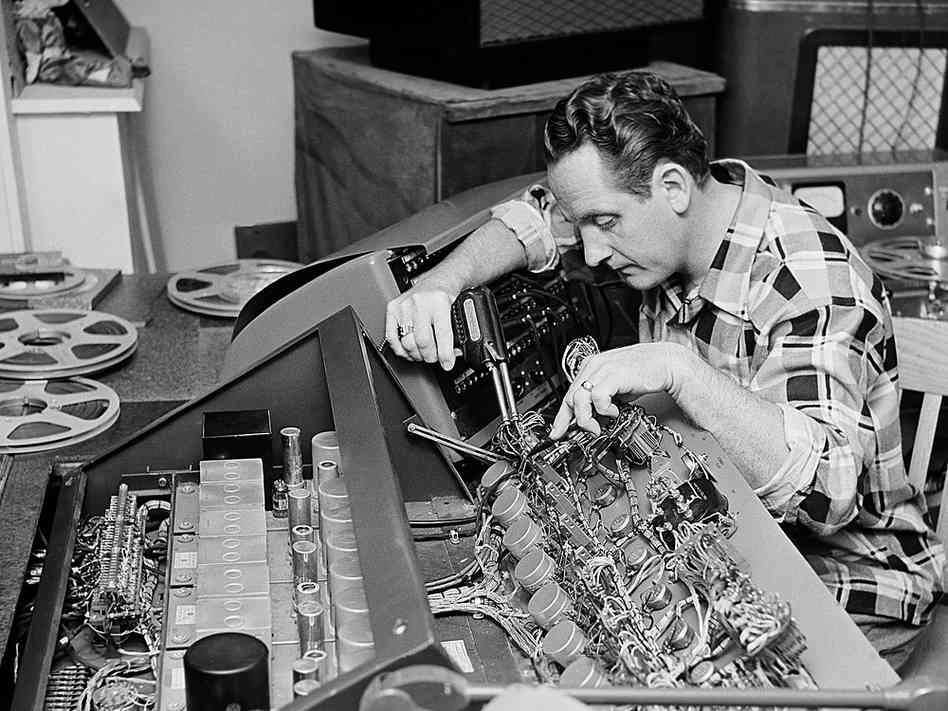
THE OCTOPUS AND THE MONSTER
With no tape machines available at first, Paul, a born inventor and innovator, built two mono lathes to cut directly to acetate discs, bouncing from one to the other as he added one track after another. In 1949, Bing Crosby brought an Ampex 300 mono tape machine over to Paul’s garage studio in Hollywood and a lightbulb went off. Add another Record head and you have soundon- sound recording, he realized, with the ability to bounce the previous tracks while adding a new instrument or voice.
“How High the Moon,” Number 1 in the U.S. for nine weeks in 1951, featured 12 tracks of guitar and another 12 tracks of vocals, and was recorded on the modified machine. However, since each new take recorded over the previous stacked tracks, the initial instruments and voices could become buried in noise and distortion with each generation of re-recording.
Paul, restlessly looking for ways to improve the production process, next hit on the idea of recording tracks individually and in parallel, working with Ampex to create the 5258 Sel-Sync, the world’s first 8-track tape machine, completed in 1956, which he dubbed the Octopus.
Les Paul Studio Powers Up with Telefunken
He also needed a way to route and adjust the signals going to and from the individual tape tracks, so he collaborated with Rein Narma, designer of the Fairchild 670 limiter, to develop and build a mixing console that would enable him to control everything while he sat in front of it with his guitar—again, a familiar concept now, but revolutionary back then.
The Monster, as Paul called it, was so far ahead of its time that some of its features didn’t appear in commercially available mixing consoles until many years later. It was also very idiosyncratic, designed specifically for Paul’s way of working, with some of its features still a mystery. The Monster has EQ on each of its eight inputs, bus (A, B and C) and track assignment, echo sends, tape machine control (including track arming and vari-speed), monitor switching, a guitar cord hard-wired into channel one, and, because he was no longer playing through an amp, built-in vibrato.
“It’s essentially the first recording console,” says Tom Camuso, director of audio engineering at the newly established Les Paul Recording Studio, “and the first with busing.”
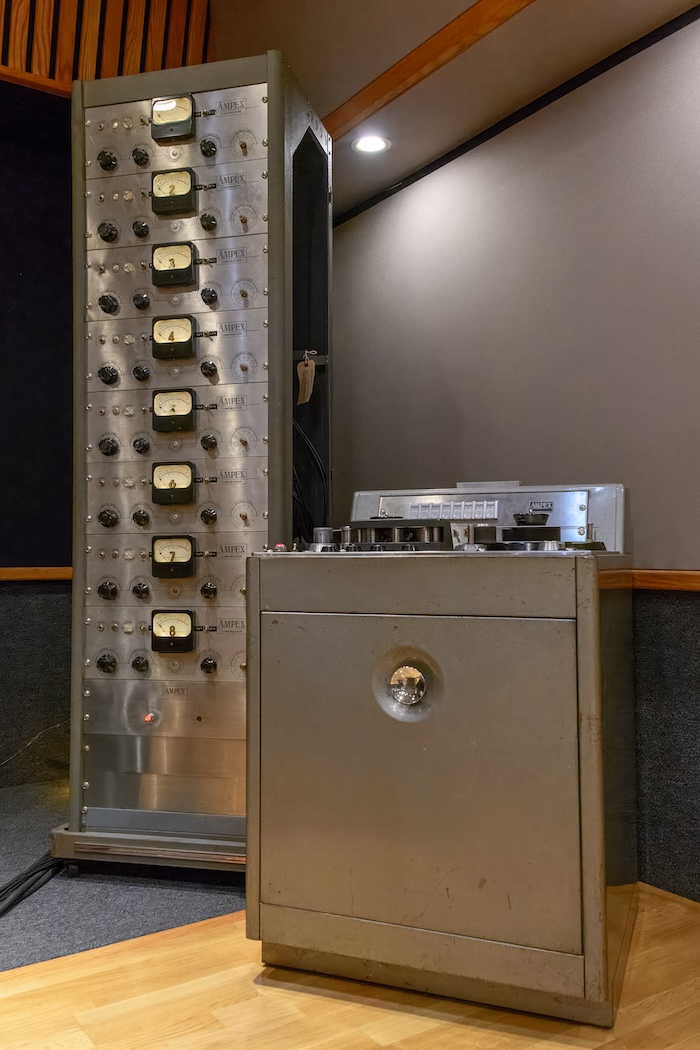
THE STUDIO AND SONGS
In March of this year, the Les Paul Recording Studio opened inside United Recording Studios in Hollywood, housing the Monster, the Octopus and the Ampex 300-3, the modded multi-head machine. The equipment had previously been on display at a museum in New Jersey, near where Paul and Ford later in life.
Several years ago, the Les Paul Foundation, which is heavily focused on education, hearing health and keeping the Les Paul heritage alive, put into motion a plan to re-introduce the couple’s music to a new generation of fans, which ultimately led to the gear’s relocation.
“After Les passed, the foundation brought all of his music to the Library of Congress and started transferring everything,” reports Michael Braunstein, Executive Director of the Les Paul Foundation and CEO of the Les Paul Recording Studio, noting that the transfer project was overseen by Steve Rosenthal, former owner of New York City studio The Magic Shop. “Les kept everything—33,000 recordings—from when he was 16 to two months before he died [in August 2009]. He never recorded over anything, and he never threw anything away.”
Discover more great stories—get a free Mix SmartBrief subscription!
The sound-on-sound recordings were destructive, of course, but every recording made while building tracks using the double-lathe process—more than 3,000 acetate discs—and the tapes are in the archive, including numerous versions, alternate takes and even previously unreleased songs. Paul’s deal with the record label was that he would deliver the finished masters; those are all in the collection.
Camuso, a Grammy Award-winning engineer, was brought in to assess the material along with Rosenthal. After realizing the enormity of assets left behind by Paul, the decision was made to restore all of his original recording equipment and use it to remix the archive. Camuso engaged a team from Thump Recording Studios in Brooklyn, which spent 10 months completely restoring all the gear, cleaning components, sourcing NOS parts from the 1950s, and even 3D printing plastic parts that couldn’t otherwise be replaced. “Once that was done, we brought it all out to L.A., set it up and I started mixing,” Camuso says.
The foundation’s plan is to have the catalog, which is mostly all mono, remastered and for Camuso to create newly restored and remixed stereo versions for a box set, and to be available for sync licensing.
